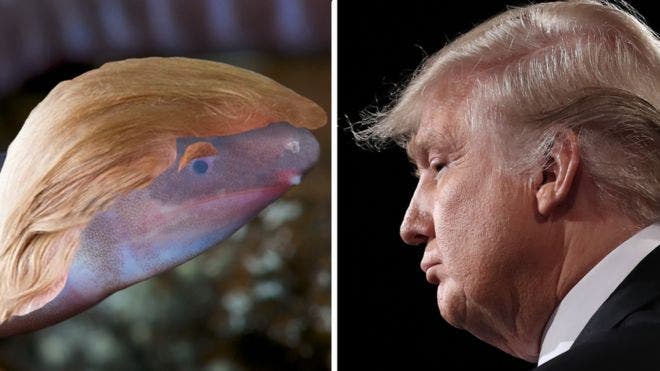The unusual amphibian’s behavior was compared to Trump’s approach to global warming.
Trump the caecilian
Dermophis donaldtrumpi was discovered in Panama. It is a caecilian — a group of limbless, serpentine amphibians which mostly live underground or hidden around streams. As it so often happens in modern times, its scientific name was auctioned, with the money going to charity (in this case, the Rainforest Trust charity).
The naming rights were purchased by EnviroBuild, a sustainable building materials company, who paid $25,000 (£19,800) at an auction for the right. The company said it wants to raise awareness about climate change, likening the creature’s behavior of burying its head underground to Donald Trump’s refusal to accept man-made climate change, although its effects are already affecting American people.
“[Dermophis donaldtrumpi] is particularly susceptible to the impacts of climate change and is therefore in danger of becoming extinct as a direct result of its namesake’s climate policies,” said EnviroBuild co-founder Aidan Bell in a statement.
“Burrowing [his] head underground helps Donald Trump when avoiding scientific consensus on anthropomorphic climate change,” he wrote.
Amphibians are indeed some of the most vulnerable creatures in the face of climate change and habitat destruction. In addition to expressing his intention to withdraw from the Paris Agreement, Trump has also consistently pushed policies that support the fossil fuel industry — the main contributor to man-made global warming. However, Trump has consistently denied the fact that man-made global warming is happening.
“I don’t know that it’s manmade,” he said in an interview with CBS’s 60 Minutes in October. “I’m not denying climate change but [temperatures] could very well go back,” he added, without offering evidence.
Just last month, Trump questioned a report which concluded that climate change would cost the US hundreds of billions of dollars annually and damage health. That report was carried out by his very own government and federal scientists.
“I don’t believe it,” he told reporters at the time.
This is exactly why the new, blind amphibian has been named after Trump, Bell explains.
“It is the perfect name. Caecilian is taken from the Latin caecus, meaning ‘blind’, perfectly mirroring the strategic vision President Trump has consistently shown towards climate change.”
This isn’t the first animal to be named after Donald Trump. A recently-discovered moth species was also named after him by biologist Vazrick Nazari. Nazari said the moth’s “hairstyle” reminded him of Trump. However, Barack Obama holds the record for most species named after a US President: 14.










